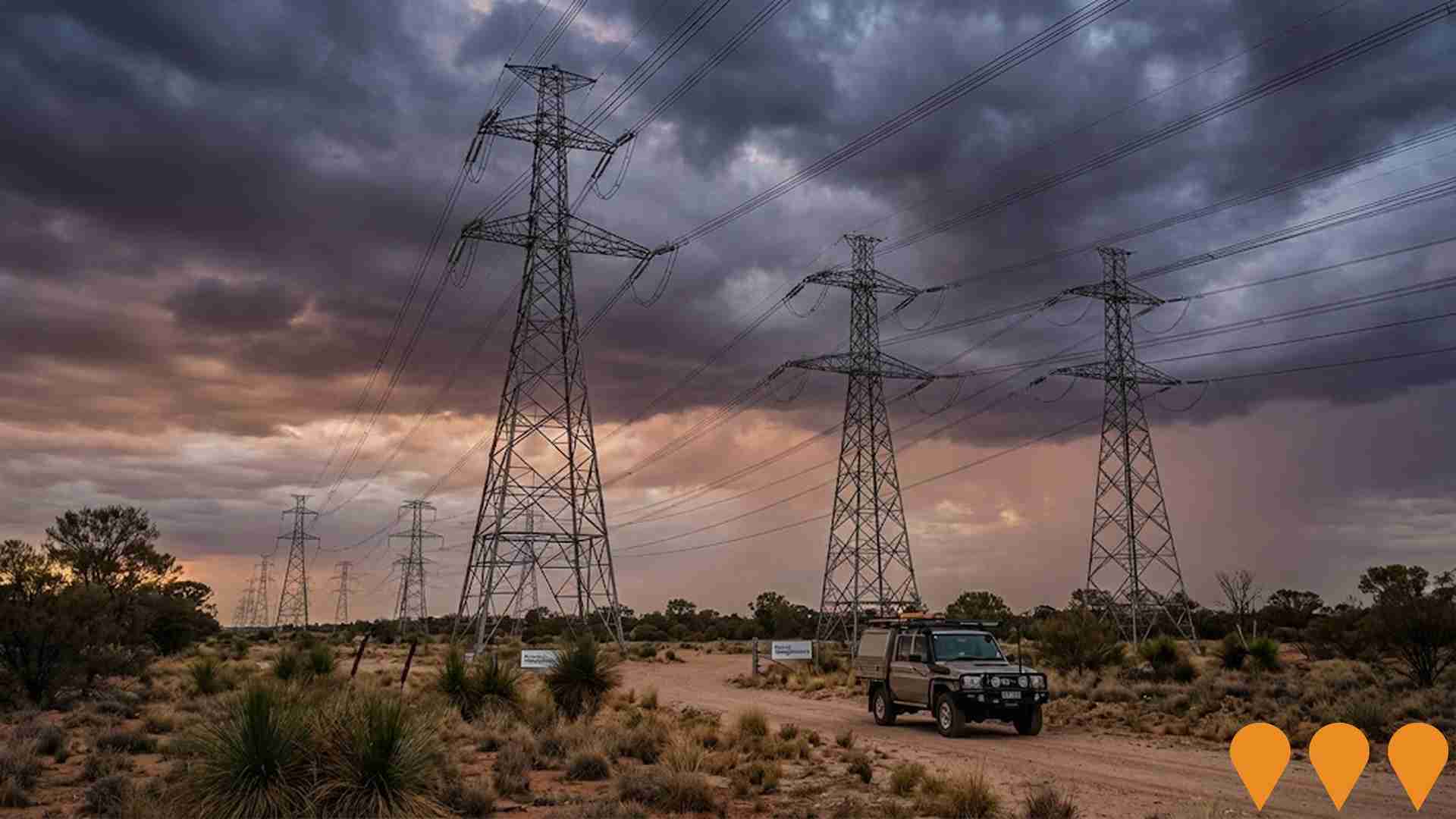Chart Color Schemes
est. as @ -- *
ABS ERP | -- people | --
2021 Census | -- people
Sales Activity
Curious about local property values? Filter the chart to assess the volume and appreciation (including resales) trends and regional comparisons, or scroll to the map below view this information at an individual property level.
Find a Recent Sale
Sales Detail
Population
Loxton Surrounds is positioned among the lower quartile of areas assessed nationally for population growth based on AreaSearch's assessment of recent, and medium term trends
Loxton Surrounds' population is approximately 1,839 as of August 2025. This figure represents a rise of 97 individuals, equating to a 5.6% increase since the 2021 Census, which recorded a population of 1,742. The growth is inferred from the estimated resident population of 1,806 in June 2024 and an additional 37 validated new addresses post-Census. This results in a population density ratio of 0.40 persons per square kilometer. Loxton Surrounds' 5.6% growth since census is comparable to the SA3 area's 5.7%, indicating strong growth fundamentals. Natural growth contributed approximately 82.4% of overall population gains during recent periods.
AreaSearch uses ABS/Geoscience Australia projections for each SA2 area, released in 2024 with a base year of 2022. For areas not covered by this data and years post-2032, the SA State Government's Regional/LGA projections by age category are adopted, based on 2021 data and adjusted using weighted aggregation from LGA to SA2 levels. Future population trends suggest an increase just below Australia's regional median, with Loxton Surrounds expected to grow by 109 persons to 2041, reflecting a total increase of 4.1% over the 17-year period.
Frequently Asked Questions - Population
Development
Residential development activity is lower than average in Loxton Surrounds according to AreaSearch's national comparison of local real estate markets
Loxton Surrounds has recorded approximately 6 residential properties granted approval annually. Over the past 5 financial years, from FY-21 to FY-25, 33 homes were approved, and an additional 2 have been approved so far in FY-26. On average, over these years, 1.2 new residents arrived per new home built.
This indicates a balanced supply and demand creating stable market conditions. The average construction cost value of new homes was $450,000, slightly above the regional average, suggesting a focus on quality developments. In FY-26, commercial approvals totaling $11.5 million have been registered, indicating balanced commercial development activity.
Compared to the Rest of SA, Loxton Surrounds shows approximately 64% of the construction activity per person and ranks in the 66th percentile nationally for development activity, though recent periods have seen increased activity. Recent building activity consists entirely of standalone homes, maintaining the area's traditional low density character with a focus on family homes appealing to those seeking space. The location has approximately 213 people per dwelling approval, indicating a low density market. Population forecasts indicate Loxton Surrounds will gain 76 residents by 2041. At current development rates, new housing supply should comfortably meet demand, providing good conditions for buyers and potentially supporting growth beyond current population projections.
Frequently Asked Questions - Development
Infrastructure
Loxton Surrounds has emerging levels of nearby infrastructure activity, ranking in the 23rdth percentile nationally
Changes to local infrastructure significantly influence an area's performance. AreaSearch has identified 13 projects likely to impact the area. Notable ones include the Loxton District Children's Centre Expansion (Woodleigh), Pocket Galleries in Loxton, William Street Staircase Repair, and Loxton Swimming Pool Upgrade. The following list details those most relevant.
Professional plan users can use the search below to filter and access additional projects.
INFRASTRUCTURE SEARCH
 Denotes AI-based impression for illustrative purposes only, not to be taken as definitive under any circumstances. Please follow links and conduct other investigations from the project's source for actual imagery. Developers and project owners wishing us to use original imagery please Contact Us and we will do so.
Denotes AI-based impression for illustrative purposes only, not to be taken as definitive under any circumstances. Please follow links and conduct other investigations from the project's source for actual imagery. Developers and project owners wishing us to use original imagery please Contact Us and we will do so.
Frequently Asked Questions - Infrastructure
Big Orange Redevelopment
Revitalisation of the iconic 15-meter tall Big Orange landmark into a $1.5 million multifaceted destination featuring a brewery, distillery, restaurant, bar, and outdoor dining verandah to boost regional tourism and celebrate the region's citrus heritage. Construction was slated to commence in 2024.
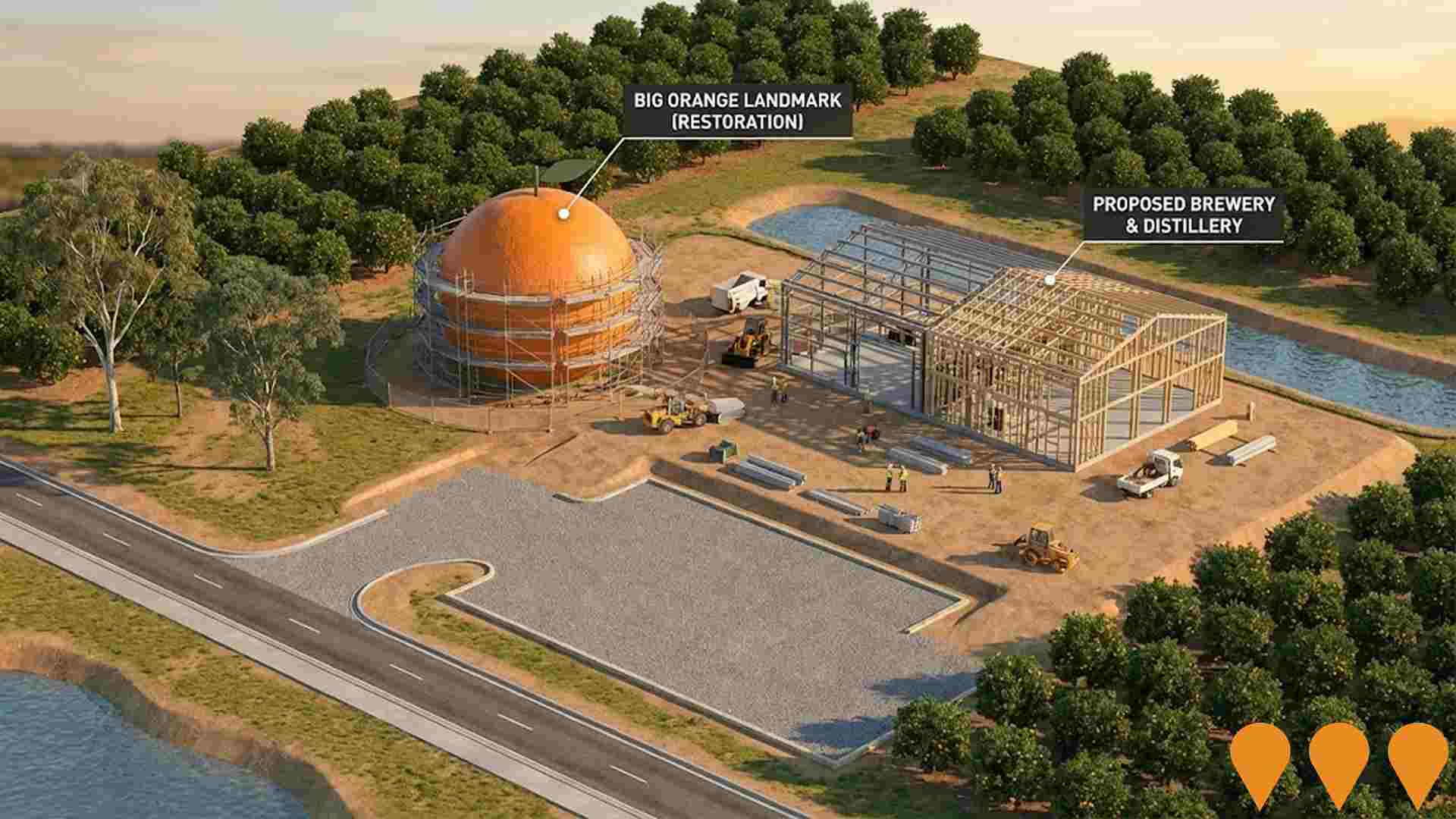
Berri Energy Project
Australia's first fully operational utility-scale DC-coupled solar and battery energy storage system. The project, built on a former racecourse, features a 5.8 MWp solar farm (9,800 solar panels) coupled with a 6.7 MWh battery. It commenced full commercial operations in early 2023, generating 11,500 MWh annually, and provides Frequency Control Ancillary Services (FCAS) and voltage control services to the grid. It also has a community fund donating over $190,000 over its lifetime.
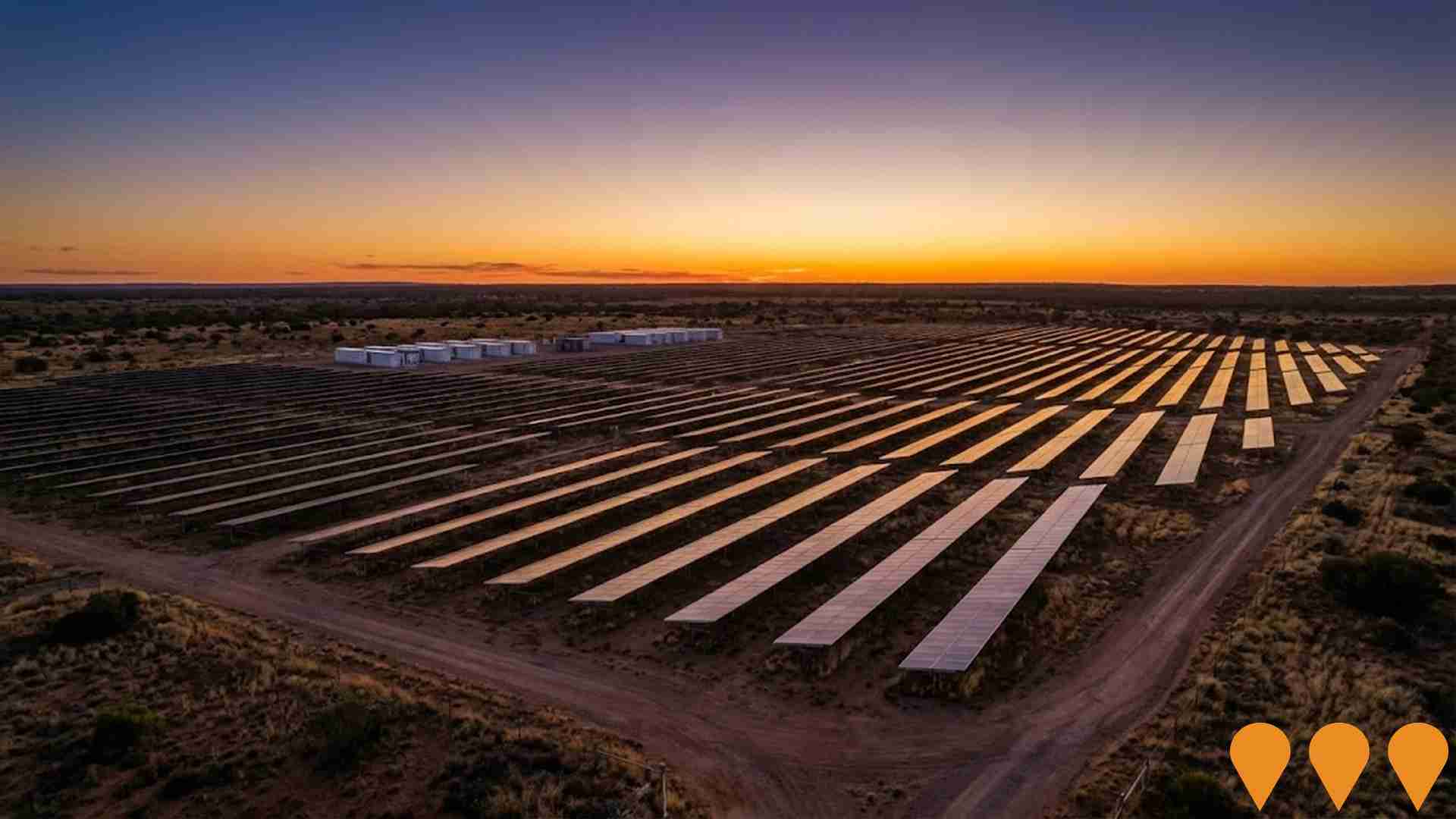
Loxton District Children's Centre Expansion (Woodleigh)
Construction of a new fit-for-purpose childcare centre to expand services for the Loxton District Children's Centre 'Woodleigh'. The modern, environmentally friendly multi-use facility will include learning hubs, offices, bathrooms, sleep hubs, kitchens, laundries, staff rooms, consulting and program training rooms, outdoor play spaces and carpark. Capacity will accommodate 120 full-time places in the first year, growing to 140 places within three years. The project aims to attract new families to the region and meet the growing demand for childcare services in the Riverland community.

Loxton Swimming Pool Upgrade
The District Council of Loxton Waikerie has commenced concept planning and design work for the potential redevelopment and upgrade of the Loxton Swimming Pool. The pool's aging infrastructure requires upgrading to meet current compliance standards and community expectations. Consultants DesignInc and insideEDGE Sport and Leisure Planning are working with Council and the community to develop options for revitalization of the 50-metre outdoor pool complex, which includes intermediate and toddler pools. Community consultation surveys closed March 10, 2025, with drop-in sessions held in early March to inform the concept design phase.

Loxton Institute
The Loxton Institute is a new library, visitor information and cultural centre developed at the historic former Loxton Council Chamber. The facility features a dedicated local history section, visitor information area with local products and Loxton merchandise, bookable meeting rooms, extensive library services, children's activity room, modern amenities, and an outdoor deck area with breezeway. The building retains part of the original heritage-listed Loxton Institute facade. Construction commenced in June 2023 and was completed in November 2024. The project was delivered by Michael Kregar Building with support from local subcontractors.
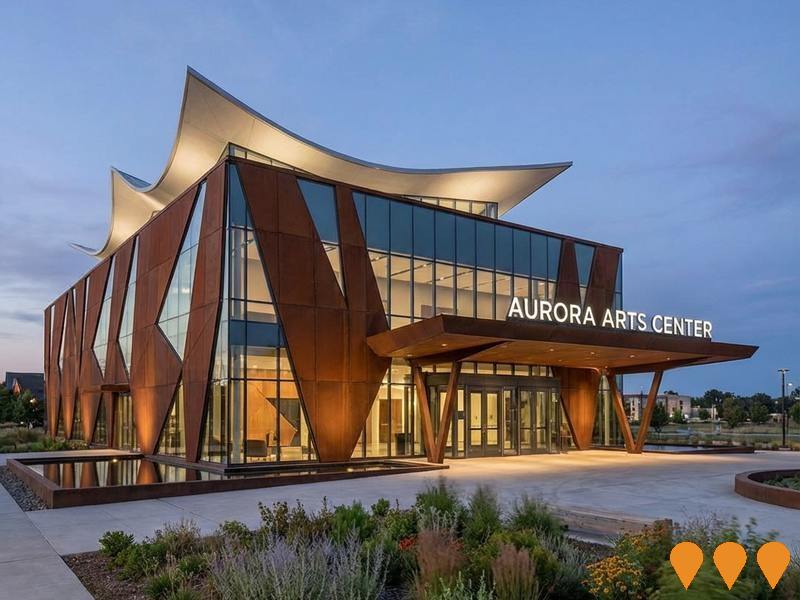
Bruno Bay Infrastructure Upgrade
Upgrades to the boat ramp, access road, carpark, barbecue shelters, seating, and toilet facilities at Bruno Bay in Cobdogla. The project aims to improve community resilience, enhancing accessibility and use during periods of high River Murray flows (up to 80GL/day) and is part of the broader South Australia Constraints Measures project. The upgrades will improve environmental outcomes and are scheduled for completion by December 2026.
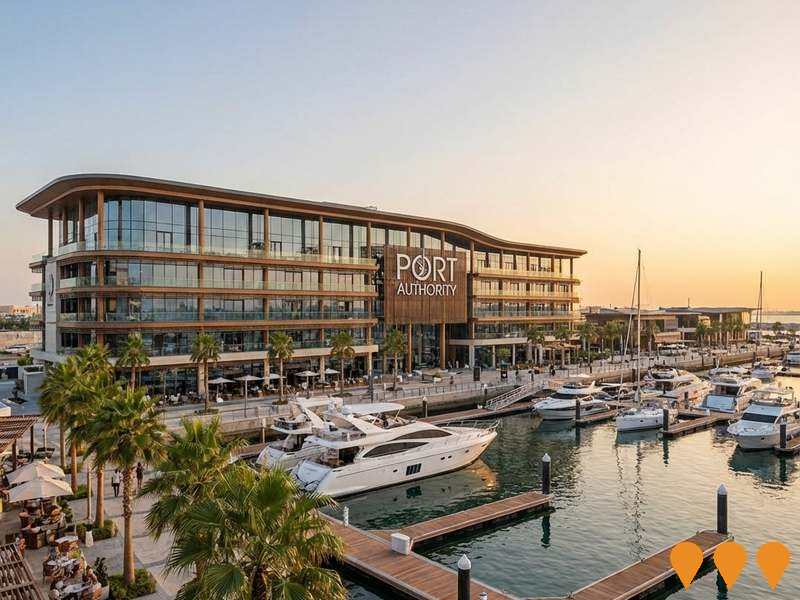
Barmera Jetty Redevelopment
Redevelopment of the Barmera foreshore jetty at Lake Bonney including new jetty structure, improved public access, lakefront activation and upgraded amenities. As of 2025 the project remains in the planning phase, with design consultation completed and the business case under development while Council seeks external funding.

McLean Street Residential Estate
Sale of a significant 3.06ha development site (Lot 45 McLean St) in the Riverland town of Berri, which was advertised with two professionally drafted concept plans for a low-density residential estate of up to 34 new homes to address the critical local housing shortage. The site was sold on October 9, 2025.

Employment
Employment performance in Loxton Surrounds has been broadly consistent with national averages
Loxton Surrounds has a balanced workforce with both white and blue collar jobs, diverse sector representation, and an unemployment rate of 2.6% as of June 2025. In this month, 929 residents were employed while the unemployment rate was 2.0% lower than Rest of SA's rate of 4.6%.
The workforce participation rate was 58.0%, slightly higher than Rest of SA's 54.1%. Dominant employment sectors included agriculture, forestry & fishing, health care & social assistance, and manufacturing. Notably, agriculture, forestry & fishing employed 3 times the regional average in Loxton Surrounds. Conversely, accommodation & food services employed only 2.0% of local workers, lower than Rest of SA's 7.0%.
Many residents commute elsewhere for work based on Census data analysis. In the year ending June 2025, labour force decreased by 2.3% and employment fell by 3.2%, leading to a 1.0 percentage point rise in unemployment rate. By comparison, Rest of SA saw an employment decline of 1.2%, labour force growth of 0.1%, and a 1.2 percentage point increase in unemployment. Jobs and Skills Australia's national employment forecasts from May 2025 indicate that overall employment is projected to grow by 6.6% over five years and 13.7% over ten years. However, applying these projections to Loxton Surrounds' specific employment mix suggests local growth of approximately 4.5%% over five years and 10.6% over ten years.
Frequently Asked Questions - Employment
Income
Income figures position the area below 75% of locations analysed nationally by AreaSearch
AreaSearch's data for financial year 2022 shows median income in Loxton Surrounds was $44,866 and average income was $49,398. This is lower than national averages of $51,728 (median) and $61,805 (average). In Rest of SA, median income was $46,889 and average income was $56,582. Based on Wage Price Index growth of 12.83% since financial year 2022, estimated incomes for September 2025 would be approximately $50,622 (median) and $55,736 (average). Census 2021 data indicates household, family, and personal incomes in Loxton Surrounds fall between the 20th and 27th percentiles nationally. Income brackets show 29.0% of individuals earn between $800 - 1,499, compared to the region's leading bracket of $1,500 - 2,999 at 27.5%. Despite modest housing costs allowing for retention of 91.5% of income, total disposable income ranks at just the 30th percentile nationally.
Frequently Asked Questions - Income
Housing
Loxton Surrounds is characterized by a predominantly suburban housing profile, with above-average rates of outright home ownership
Loxton Surrounds' dwelling structure, as per the latest Census, consisted of 98.5% houses and 1.5% other dwellings (semi-detached, apartments, 'other' dwellings). This compares to Non-Metro SA's 89.9% houses and 10.1% other dwellings. Home ownership in Loxton Surrounds stood at 51.7%, with mortgaged dwellings at 31.0% and rented ones at 17.3%. The median monthly mortgage repayment was $1,083, aligning with Non-Metro SA's average. The median weekly rent was $188, compared to Non-Metro SA's $220. Nationally, Loxton Surrounds' mortgage repayments were significantly lower than the Australian average of $1,863, and rents were substantially below the national figure of $375.
Frequently Asked Questions - Housing
Household Composition
Loxton Surrounds has a typical household mix, with a higher-than-average median household size
Family households constitute 71.8% of all households, including 26.4% couples with children, 38.5% couples without children, and 5.8% single parent families. Non-family households comprise the remaining 28.2%, with lone person households at 25.5% and group households making up 2.7% of the total. The median household size is 2.4 people, larger than the Rest of SA average of 2.3.
Frequently Asked Questions - Households
Local Schools & Education
Loxton Surrounds faces educational challenges, with performance metrics placing it in the bottom quartile of areas assessed nationally
The area faces significant educational challenges with university qualification rates at 11.6%, substantially lower than the Australian average of 30.4%. This disparity presents both a challenge and an opportunity for targeted educational initiatives. Bachelor degrees are the most common at 8.1%, followed by graduate diplomas (1.8%) and postgraduate qualifications (1.7%). Trade and technical skills are prominent, with 41.8% of residents aged 15+ holding vocational credentials - advanced diplomas (11.0%) and certificates (30.8%).
Educational participation is high at 25.4%, including primary education (11.5%), secondary education (6.6%), and tertiary education (2.3%). Moorook Primary School and Kingston-on-Murray Primary School serve a total of 20 students, focusing exclusively on primary education with secondary options available in surrounding areas. The area has limited local school capacity at 1.1 places per 100 residents compared to the regional average of 13.6, leading many families to travel for schooling. Note: where schools show 'n/a' for enrolments please refer to parent campus.
Frequently Asked Questions - Education
Schools Detail
Nearby Services & Amenities
Transport
No public transport data available for this catchment area.
Frequently Asked Questions - Transport
Transport Stops Detail
Health
Health performance in Loxton Surrounds is lower than average with common health conditions somewhat prevalent across both younger and older age cohorts
Loxton Surrounds faces significant health challenges with common health conditions prevalent across both younger and older age cohorts. The rate of private health cover is extremely low at approximately 46% of the total population (~847 people), compared to the national average of 55.3%.
The most common medical conditions in the area are arthritis, impacting 11.2% of residents, and asthma, affecting 8.5%. A total of 65.3% of residents declared themselves completely clear of medical ailments, compared to 61.8% across Rest of SA. As of a recent study conducted on 09-07-20XX, the area has 26.3% of residents aged 65 and over (483 people). Health outcomes among seniors in Loxton Surrounds are above average, performing even better than the general population in health metrics.
Frequently Asked Questions - Health
Cultural Diversity
Loxton Surrounds is considerably less culturally diverse than average when assessed alongside AreaSearch's national rankings for language and cultural background related metrics
Loxton Surrounds had a cultural diversity below average, with 88.5% of its population being citizens, 90.5% born in Australia, and 96.6% speaking English only at home. Christianity was the main religion, making up 50.0% of people, compared to 46.1% across Rest of SA. The top three ancestry groups were English (31.0%), Australian (30.9%), and German (15.4%).
Notably, Hungarian, Polish, and Croatian ethnicities had higher representations in Loxton Surrounds than regionally, at 0.3%, 0.6%, and 0.4% respectively.
Frequently Asked Questions - Diversity
Age
Loxton Surrounds hosts an older demographic, ranking in the top quartile nationwide
Loxton Surrounds has a median age of 49, which is higher than the Rest of SA figure of 47 and substantially exceeds the national norm of 38. Compared to Rest of SA, Loxton Surrounds has a higher concentration of residents aged 55-64 (17.3%) but fewer residents aged 35-44 (8.9%). This 55-64 concentration is well above the national figure of 11.2%. Between the 2021 Census and the present, the 75 to 84 age group has grown from 6.3% to 8.5%, while the 15 to 24 cohort has increased from 8.8% to 10.4%. Conversely, the 45 to 54 cohort has declined from 16.0% to 12.9%. By 2041, demographic projections show significant shifts in Loxton Surrounds's age structure. The 85+ group is projected to grow by 223%, reaching 146 people from the current figure of 45. The aging population trend is evident, with those aged 65 and above comprising 88% of projected growth. Conversely, both the 15 to 24 and 0 to 4 age groups are projected to decrease in numbers.

